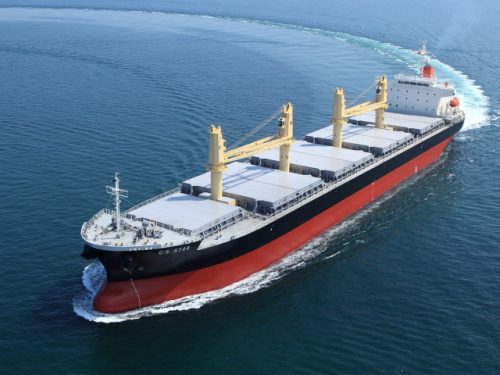shipping Association of iran– The maritime transportation market, as one of the main pillars of global trade, is always influenced by various economic, political, and seasonal factors. This weekly report reviews the recent trends in the Bulk (dry cargo) and Tanker (liquid cargo) shipping markets. Over the past week, there has been a significant decline in rates across many sectors, mainly due to reduced demand, an increase in idle ships, and the approach of Asian holidays.
This report provides a comprehensive analysis of the market situation, examining the impact of these factors on shipping rates and maritime activities. It is hoped that this analysis will assist maritime industry professionals and international trade stakeholders in making informed decisions.
Bulk Shipping Market (Dry Cargo)
Capesize Vessels
The Capesize market experienced a downward trend, with the BCI STC index dropping by $2,852 to $8,156. In the Pacific region, mining activity was limited, with only one major miner consistently active. The freight rate from Western Australia to China started the week around $6 but declined to $5.85 by week’s end. Although cargo volumes appeared stable, limited demand and an increase in idle vessels exerted considerable pressure on the market. In the South Atlantic, new demand from Brazil and West Africa to China temporarily improved the C3 index, but the rising number of idle ships and reduced transatlantic activity led to sharp rate declines by the end of the week.
Panamax Vessels
Rates trended downward throughout the week, with the market searching for a floor. In the Pacific, early-week activity was relatively strong, but it significantly decreased as Asian holidays approached. In the Atlantic, a lack of demand and an increase in idle vessels negatively affected rates. Freight rates from South America to the Far East also saw substantial declines. In Asia, previous rates observed from the NoPac region decreased, settling around $7,000.
Ultramax/Supramax Vessels
This segment also faced a challenging week, with rates declining due to uncertainty and a shortage of new cargoes. In the Atlantic, demand was very limited, and rates in Asia also dropped significantly due to the increasing number of idle vessels. This trend is expected to continue as Chinese holidays draw near.
Handysize Vessels
There was little notable activity in this segment, with rates decreasing in Europe and the Mediterranean. Rates in the South Atlantic and the Gulf of Mexico were also under pressure. In Asia, the growing number of idle ships led to further rate reductions.
Tanker Shipping Market (Liquid Cargo)
VLCC Vessels
The VLCC market returned to levels seen two weeks prior. The freight rate for 270,000-ton cargoes from the Persian Gulf to China (TD3C) dropped by 23 points to WS54.15. In the Atlantic, freight rates from West Africa to China (TD15) and from the Gulf of Mexico to China (TD22) also declined.
Suezmax Vessels
Rates in this segment also fell, though the decline was less pronounced than in the VLCC segment. Various routes, including Nigeria to Europe and the Persian Gulf to the Mediterranean, experienced rate reductions.
Aframax Vessels
In the North Sea, the freight rate for 80,000-ton cargoes on the Cross-UK Continent route remained at WS110. In the Mediterranean, rates saw a slight increase, but the Atlantic market weakened.
Clean Tankers (Refined Products Shipping)
- LR2: Rates declined in the Persian Gulf.
- LR1: Rates saw significant drops on various routes, including the Persian Gulf to Japan and Europe.
- MR: Rates fell in both the Persian Gulf and the Atlantic.
This report indicates that the maritime transportation market faced multiple challenges over the past week. Decreased demand, an increase in idle ships, and the approach of Asian holidays were the main factors behind the rate declines across various segments. This trend is expected to continue in the coming weeks.




